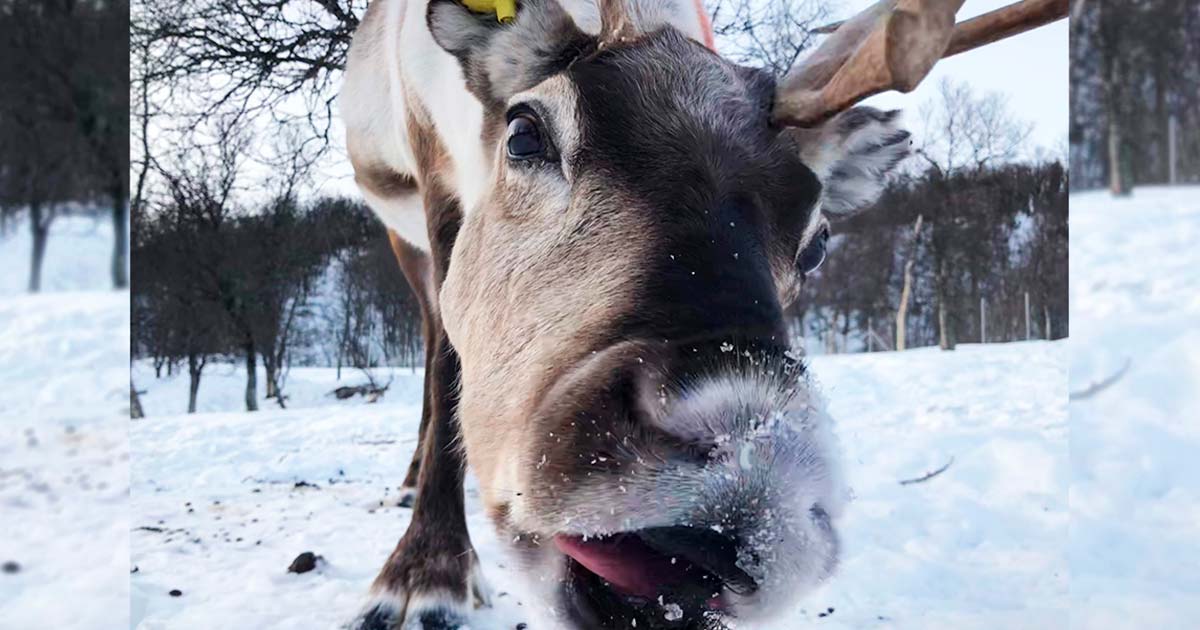Scientists Discover A Reindeer Superpower - Ruminating is a Naturally Restful Sleep Hack!
Throughout history, reindeer have woven themselves into the fabric of Arctic society, mythology and folklore. Reindeer have also found their way into popular culture, prominently featuring in the iconic tales of Santa Claus. However, a new discovery about reindeer sleep patterns adds a peculiar twist to their already intriguing history.
Reindeer's Unique Sleeping Habits Revealed
Best known for their association with Christmas, as the trusty steeds pulling Santa’s sleigh, reindeer have been vital for indigenous cultures of the Arctic and subarctic north for millennia, including the Sami people of Northern Europe. Reindeer have evolved and adapted for their Arctic home, including thick fur for insulation, concave hooves that serve as snowshoes, nasal adaptations to warm cold air before it hits their lungs and the ability to store fat reserves to survive food-scarce winter months.
In a surprising revelation, researchers have now uncovered another fascinating aspect of reindeer behavior related to their sleep. Published in the journal Current Biology, the study reports that reindeer exhibit a distinctive sleep pattern tied to their rumination habits. If you have no idea what rumination is, it’s the chewing and re-chewing of partially digested food, which improves nutrient absorption and aids digestion.
This reindeer rumination study has concluded that the more time reindeer spend ruminating, the less time they allocate to non-rapid eye movement (non-REM) sleep, which is crucial to promote physical repair, immune function and overall well-being. Electroencephalography (EEG) recordings also revealed that brainwave patterns during rumination resemble those during non-REM sleep, suggesting its restorative effect.

Reindeer have the ability to store fat reserves to survive food-scarce Winter months. (Gabriela Wagner / Current Biology / Furrer et al.)
Studying Reindeer Rumination in Tromsø, Norway
The researchers conducted the study on female Eurasian tundra reindeer in Tromsø, Norway, during experiments within indoor stables with controlled lighting and temperature. Contrary to other species that adjust sleep duration based on environmental conditions, reindeer maintained consistent sleep durations throughout the year, spending approximately 5.4 hours in non-REM sleep, 0.9 hours in REM sleep, and 2.9 hours ruminating daily.
The fact that ruminating reindeer displayed brainwave patterns indicative of non-REM sleep challenges the traditional understanding of the purposes of rumination and suggests that it might serve a restorative function similar to sleep. Additionally, the researchers observed that reindeer were less reactive to disturbances while ruminating, further supporting the notion that rumination provides a state of rest.
This quirky sleep behavior takes on added significance during the summer months when reindeer feed almost continuously in preparation for the approaching food-sparse Arctic winter. The researchers speculate that this unique adaptation allows reindeer to multitask, covering both their sleep and digestive needs simultaneously. Understanding these sleep intricacies sheds light on how reindeer thrive in their challenging environment, offering a captivating glimpse into the hidden world of these fascinating Arctic inhabitants.
Top image: When reindeer ruminate, aka chew, they are actually catching up on their sleep, claims new study. Source: Leo Rescia / Current Biology / Furrer et al.

















